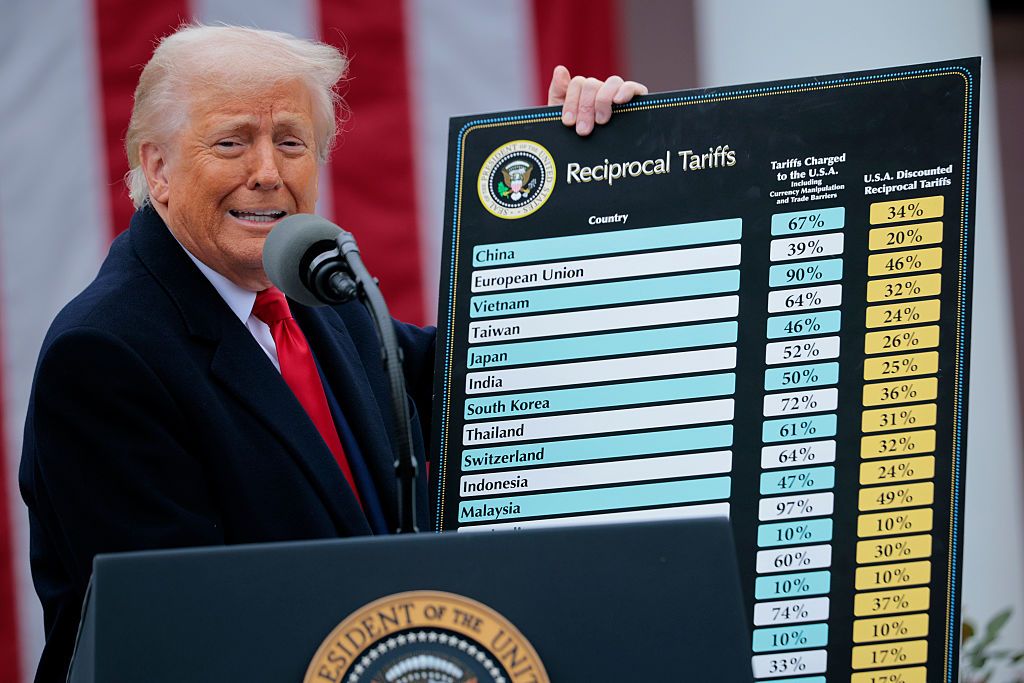
The tariff announcement by the Trump administration on products shipped into the US has thrown multiple industries into a tailspin – and the camera industry is no exception. But the trade war seems to be constantly changing as new US tariffs are announced, retaliatory measures are taken, and the market responds. That evolving battle means that the future of camera pricing in the US is unclear at best. But, as the trade war has raged on, several camera companies have now announced price changes in the US, including Sony, Canon, Nikon, Fujifilm, Leica, and Sigma.
When Digital Camera World originally reached out to the major camera brands, few were able to offer a clear answer as to whether or not prices in the US would be affected, despite speculation. But, as the sweeping “Liberation Day” tariffs went into effect on April 08, some brands started confirming a price increase. With additional countries announcing trade agreements, speculation is swirling about more companies to follow suit – and potentially additional price hikes from the brands that have already adjusted prices.
Now, several camera companies have confirmed price increases or delays as a result of the tariffs, including:
- Canon has now increased the cost of several cameras and lenses. During the earnings call for the first half of 2025, the company also suggested that additional price changes would help offset new tariff costs.
- Nikon increased the cost of many lenses in the US on June 23; cameras did not seem to change in price on June 23
- Sony has now increased the cost of most mirrorless bodies and dozens of lenses in the US, after previously indicating during an earnings call that a cost increase could help offset the increase in tariffs, and raising the cost of the compact camera RX100 VII
- Fujifilm has increased the cost of cameras and lenses, effective August 01. Previously, the company also launched Japan-made versions of several popular cameras to avoid the steeper tariffs from China
- Leica has increased some camera prices, then later lowered some as tariff costs fell
- Sigma has increased the cost of many cameras and lenses by around 10 percent, but isn't planning to increase prices more now that tariffs have increased to 15 percent
- Panasonic hasn't announced widespread tariff increases, but did increase the cost of a popular compact camera
As countries negotiate and the trade war continues to develop, the status of tariffs in the US is changing regularly. For example, the originally announced tariffs were paused at 10 percent, which was later extended until August 01. That excluded China's 145 percent tariff, but that was later paused at 30 percent to allow time for negotiations. The US has announced agreements with some countries, including Japan and the EU. A court has ruled that some of Trump's tariffs went beyond the authority of the Emergency Economic Powers Act, but that decision now faces an appeal.
As brands adjust camera prices and countries negotiate, follow the live blog below and check back for regular updates on the latest news concerning the US tariffs' impact on the photography industry.
Blackmagic confirms camera price hike in the US
The cinema-focused Blackmagic Design was the first company to confirm that tarrifs would impact prices in the US. The company confirmed that prices would be increasing for customers in the US on social media, directing fans to the website for current pricing.
A Blackmagic representative, commenting in a user forum, noted that Blackmagic was able to move the production of Pyxis cameras to reduce the impact of the tariffs.
That move raised the price of the Pyxis 12K G2 just two days after announcing the camera, increasing the cost by about $500, which is about 10 percent. However, the camera is currently still listed for pre-order at B&H at the original $4,995 price.
Moment says most prices will increase
Moment, a US-based company that makes photography accessories, confirmed in an email to customers that “most items” would be increasing in cost by $5 to $10 beginning next week. The company noted, however, that a few items would keep the same cost, and some products would even drop in price.
“We pride ourselves on making the best gear from suppliers we trust,” the company wrote in the email. “Unfortunately these tariffs make it impossible for us to continue without cheapening the quality, laying off the team, or forcing our mom-and-pop suppliers out of business. We’d rather raise our prices and ask for your help to get through these crazy times than face any of those alternatives.”
Moment also has an online store that sells digital cameras and while the confirmed price increase appears to be for Moment products, the company says that it expects products from other brands to increase in cost as well.
“If nothing changes, we expect prices to go up,” the company wrote. “We've already started to receive messages from brands that they too will be raising prices. Most of the world’s cameras are made in Asia, and we would expect camera prices to also start rising this year.”
Trump pauses reciprocal tariffs for 90 days, excluding China
On Wednesday, April 09, the Trump administration announced that the reciprocal tariffs would be paused for 90 days on most countries. The White House noted that tariffs would be brought to 10 percent for most countries during that pause.
The move excludes China, where US tariffs have increased to 125 percent. However, with a majority of the camera brands located in Japan, the announcement means a drop from a 24 percent tariff to 10 percent, which could lessen any impact on camera prices.
Canon USA says that it is "continually monitoring the impact of tariffs"
In a statement to Digital Camera World, a Canon USA representative said that the company is monitoring the tariffs. The company has not announced any related price changes in the US at this time.
“Canon remains fully committed to providing exceptional value and service to our customers and channel partners," a Canon USA representative said in a statement. "We are continually monitoring the impact of the international import tariffs on our business. As a global leader in digital imaging solutions, Canon U.S.A. has an obligation to its customers and to the industries we serve, to provide the highest and most advanced level of technology that elevates what's possible both today and for generations to come.”
China, facing a 145% tariff, bans American-made drones
In part of a response to the US tariffs, which are now at 145 percent for China-made goods, China has now banned 11 American drone companies. Among the list of companies now on the "Unreliable Entities" list is drone-maker Skydio.
While the move is in response to the trade war, the ban sounds startlingly familiar to the legislation that nearly banned China-made DJI drones from the US last year. That legislation did not pass, but instead, the US government gave DJI one year to pass a safety inspection or face a ban in the US. DJI has recently pressed for that review to get started, with nine months remaining before the deadline. When the legislation passed, DJI noted that the law failed to designate an agency to take on the review and did not state what would happen if such a review didn't occur before the deadline.

Camp Snap warns it's about to sell out of cameras "due to new tariffs"
Camp Snap, the maker behind the affordable retro camera that resembles a digital disposable camera, has warned customers that the popular cameras are close to selling out. In an email to subscribers, Camp Snap said, "We're working hard to relocate our factory out of China and plan to be back online soon – but in the meantime, inventory is running low."
The camera's creators urged those needing the camera for summer camp to order in the next day or two to ensure that it arrives on time. Camp Snap is a screen-free camera that originally launched as a way for campers to take pictures at screen-free camps without the expense of disposable film. While originally meant for camp kids, the camera has also found a following among digital minimalists and retro fans.
New tariff exemptions keep smartphones safe from price hikes, but not cameras
On Friday, the US Customs and Border Protections shared a list of categories that would be exempt from the tariffs, a list that includes smartphones, monitors, SSDs, modems and routers. The list of exceptions does not include cameras, which can fall into a few different tariff categories. (Broadcast cameras, for example, are a different category for tariffs.)
That could prevent the steep price increase that has analysts projecting iPhones to cost more than $3,600 under the new tariffs. With cameras excluded, however, photography gear manufactured in China could see steep price increases. While tariffs have been paused, China was excluded, and the baseline 10 percent tariff on other regions remains in place.
In a post on Truth Social, however, President Donald Trump said that those categories aren't exempt but are rather moving to a different tariff bucket: "There was no Tariff 'exception' announced on Friday. These products are subject to the existing 20% Fentanyl Tariffs, and they are just moving to a different Tariff 'bucket.'"
An additional semiconductor tariff is coming, which could further hurt the camera industry
US Commerce Secretary Howard Lutnick said in an interview that semiconductor tariffs are "coming probably in a month or two." This would add a tax to electronics that use semiconductors, which would include the smartphones that were recently listed as exempt.
Notably, however, a tariff on devices with semiconductors could also have a significant impact on the camera industry. The sensor on a digital camera is a type of semiconductor.
“All those products are going to come under semiconductors," Lutnik told ABC News, "and they’re going to have a special focus type of tariff to make sure that those products get reshored. We need to have semiconductors, we need to have chips, and we need to have flat panels — we need to have these things made in America.”
A post on Truth Social by President Donald Trump seemed to confirm potential semiconductor tariffs: “We are taking a look at Semiconductors and the WHOLE ELECTRONICS SUPPLY CHAIN in the upcoming National Security Tariff Investigations.”
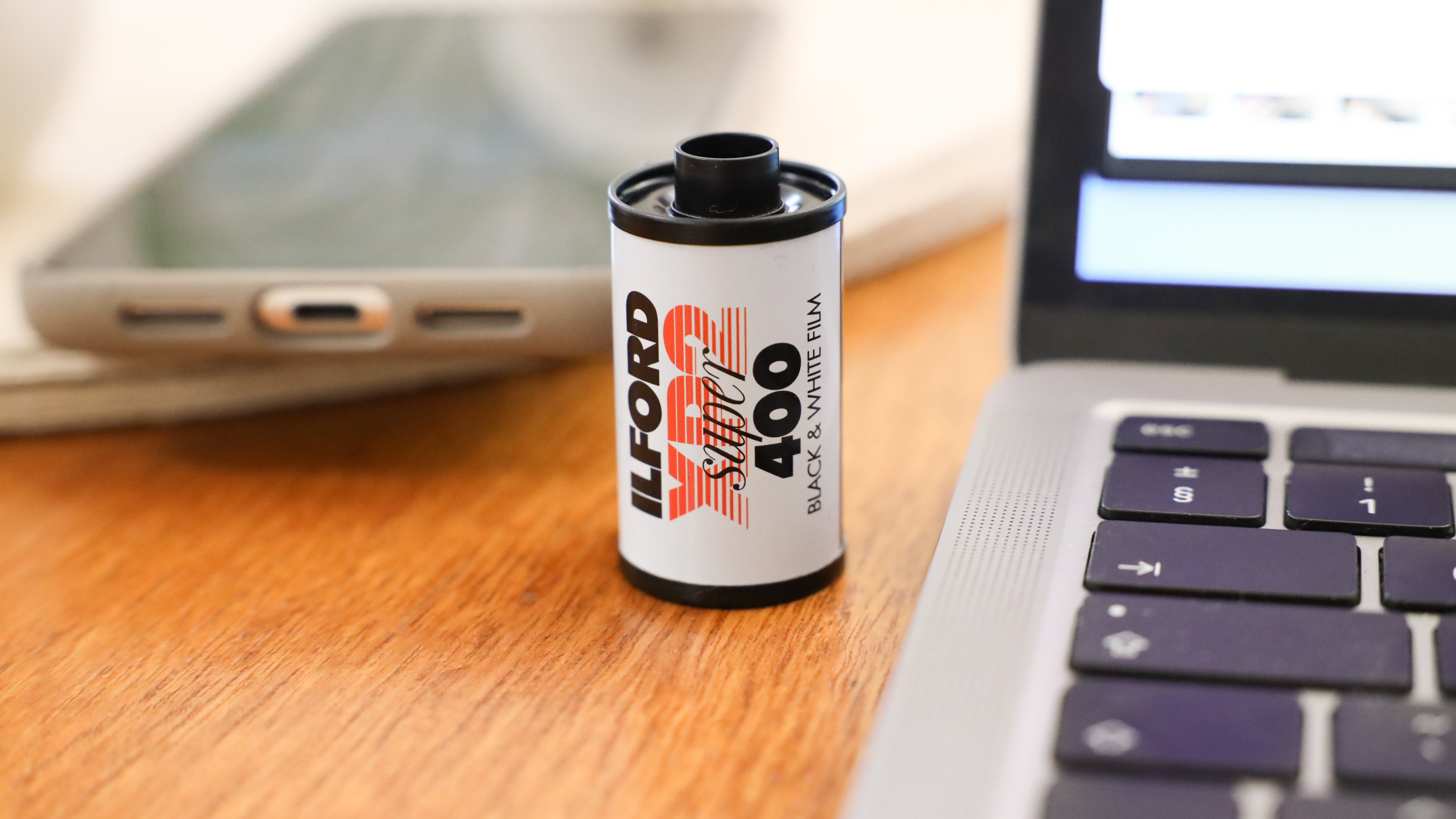
Multiple film labs are raising the cost of Ilford film
Two camera stores based in the US have confirmed a 11-12 percent increase on Ilford film and paper, according to PetaPixel. The outlet reports that a Shutter Junkies and Blue Moon Camera have both confirmed that Ilford parent company Harman has increased the cost of film and paper in the US.
Ilford film and paper have increased by 11 percent at those US labs, with chemicals increasing to 12 percent, according to the report. While Shutter Junkies noted those increases were effective immediately, one-time-use disposable camera pricing is not changing at least while the store's current inventroy lasts.
Harman is a UK-based company and the increase in cost for Ilford film and paper of about 11-12 percent sits in line with the 10 percent tariff that was not part of the 90-day tariff pause. Paterson accessories, which is another brand owned by Harman, are also expected to increase for customers in the US by 11 percent, although the products produced in China could see a higher jump.
Trump administration begins investigating the possibility of tariffs on semiconductors
Federal documents shared online on Monday, April 14, confirm that the Trump Administration is investigating the impact of a potential tariff on semiconductors, as well as pharmaceuticals. According to the New York Times, the investigation looks into placing tariffs on both products that contain semiconductors as well as the equipment used to manufacture semiconductors.
The digital sensor inside a camera is a type of semiconductor. If enacted, that could mean additional tariffs on digital cameras as well as other electronics. While still in the research stage, the potential tariff would be under legislation that allows the president to enact tariffs to protect national security, under the Trade Expansion Act of 1962.
Astrophotography brand Move Shoot Move confirms a 10 percent increase
Move Shoot Move, a company that makes astrophotography accessories, including star trackers, has announced a ten percent price increase for products sold in the US beginning on April 22. The company announced the price increase in an email to subscribers.
"This isn’t what we wanted," the email reads. "It goes against the heart of what we do — making astrophotography more accessible, not less. But this step is necessary to ensure we can continue supporting you with the same quality and service."
US photographers eyeing a Move Shoot Move star tracker may want to consider buying before the April 22 scheduled price increase.
Rumors: Camera dealers suggest price increases could come as soon as 1-2 weeks
While little official data remains on the impact of tariffs on camera pricing, camera dealers have speculated that price increases could be coming as soon as 1-2 weeks. An unverified report by Canon Price Watch indicates that some Canon authorized dealers have said that prices will be increasing in 1-2 weeks. Other camera dealers have speculated that a reduction in sales and rebates could offset tariff costs instead.
Official details from camera brands themselves, however, remain slim. Manufacturers may be waiting to see how the tariffs, which seem to be changing regularly, play out.
While rumors and speculation on the impact of camera prices remain prevalent, uncertainty is pushing some shoppers to buy early while others face decision paralysis. With the tariffs being announced and then delayed, however, panic buyers may be unnecessarily rushing buying decisions.
Moving camera manufacturing to the US may not skirt tariffs, Blackmagic Design suggests
In a recent interview, a Blackmagic Design representative said that the company was looking into building a factory in Texas, but the potential semiconductor tariffs could negate the cost benefits of such a move. Blackmagic, a company based in Australia that has already announced price hikes in the US for some cameras, indicated that it was exploring a US-based factory in order to be closer to the US companies that supply some camera sensors.
However, Blackmagic says that those US companies source those sensors from outside of the US. With the Trump administration investigating a potential tariff on semiconductors, those plans for a US factory appear to be on hold, as the cost of components could still increase.
The interview sheds some light on the confusion surrounding the recently enacted tariffs and the potential for a semiconductor tariff, which the White House indicates would replace earlier tariffs rather than be added on top of. While the goal of the tariff is to boost American manufacturing, the potentially paused Blackmagic factory is an example of how the effects of tariffs may not be so simple.
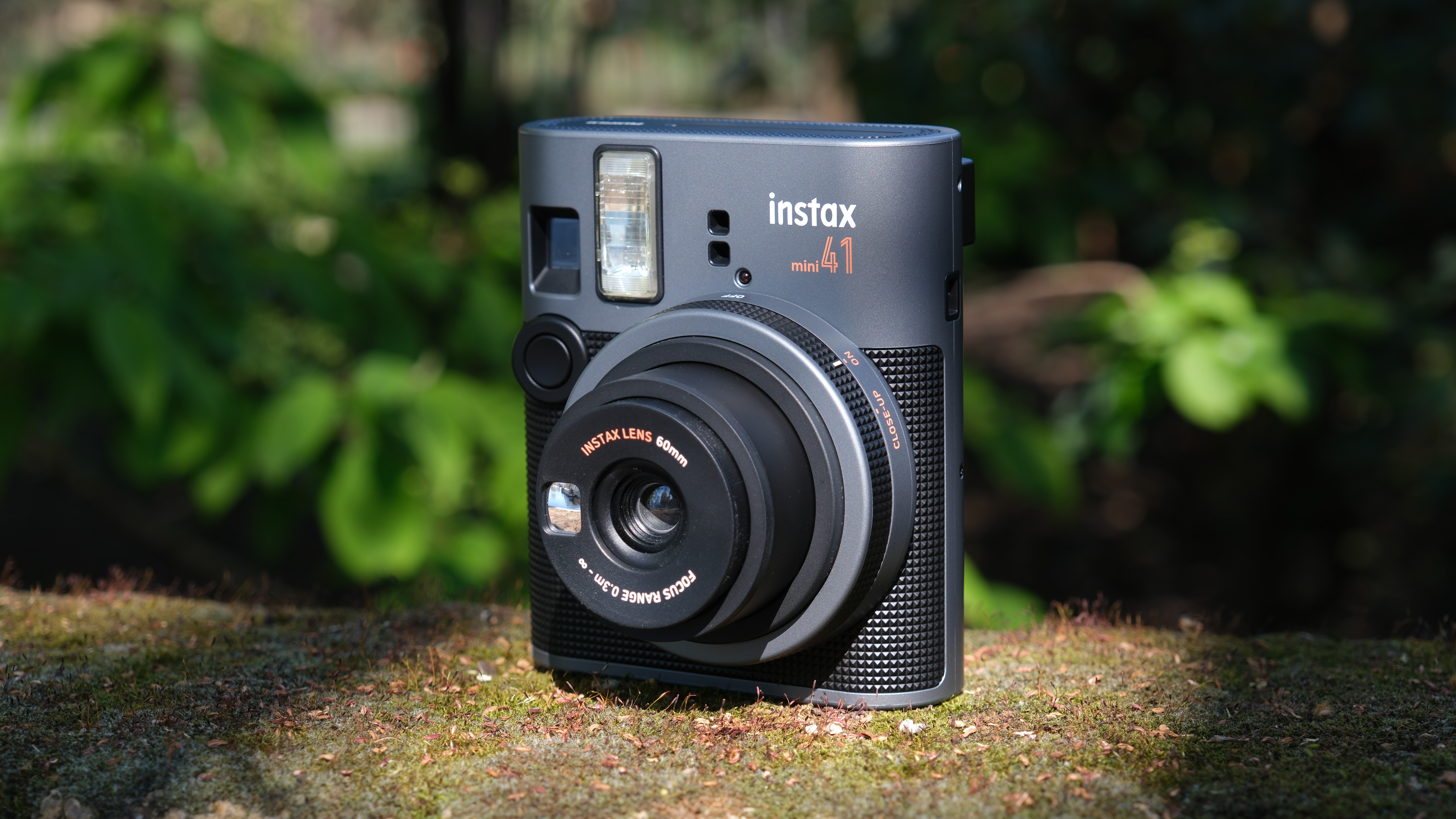
The newly announced Instax Mini 41 will cost 30 percent more than the previous model in the US
Fujifilm did not share a US price for the new Instax Mini 41 at the announcement last week, but now the brand has officially shared the retail price for the US: $129.99. That's a 30 percent increase from the older Instax Mini 41. In comparison, the cost in the UK is £94.99, a £5 drop from the older camera.
Fujifilm did not comment on whether or not the price increase is due to tariffs, but the announcement could be the first sign of how the changes could impact camera pricing in the US. As an affordable instant film camera, however, it's still unclear how high-end digital cameras may be affected by the tariffs.
Wandrd updates fans: "We may need to raise prices on some of our gear"
In an email to subscribers, camera bag brand Wandrd has alerted fans that prices might be rising in the future. Wandrd hasn't officially raised any pricing yet, but the company says that production costs have gone up and prices may need to increase accordingly, depending on how the tariffs play out.
"We always want to keep you in the loop," the email reads. "With these new tariffs, our production costs have gone up – and they could rise even more. Depending on what happens, we may need to raise prices on some of our gear. We're doing everything we can to hold the line – pushing back where we can and looking for smart ways to stay efficient. But we also believe in being upfront with our community before anything shifts. If you've been eyeing something, now might be the time to grab it at the current price – just in case."
The announcement doesn't confirm if a price increase will be happening, but indicates that camera bags may be impacted by tariffs as well, depending on how the tariffs play out.
Editing accessories may be getting pricier as a report hints at higher Logitech prices
The cost of many Logitech computer peripherals has increased in the US, according to a report by The Verge. According to the report, the cost of Logitech MX Master 3S – Digital Camera World's top choice on the best computer mouse for photo and video editing – has increased in cost by $20. The list price of the mouse is now listed at $119.99 on Logitech's store as well as on Amazon. However, Amazon US currently lists a temporary discount that brings the mouse back down to $99.99.
Keyboards were also among the products that saw a price jump, according to the report.

Fujifilm halts orders of the X100VI, GFX100RF, and some X-M5 models in the US as the company assesses the impact of tariffs
Pre-orders for the Fujifilm X100VI, the GFX100RF and black variant of the X-M5 have been temporarily halted in the US, the company has said. Fujifilm released a statement that pre-orders for the three cameras have been temporarily suspended while the company assesses "various changes, including tariffs." The pause on pre-orders only applies to the US.
"In the US market, we have temporarily suspended orders for some digital camera products in order to assess various changes including tariffs, and their impact as cost-increasing factors," A Fujifilm North America representative told Digital Camera World. "As a result, we are currently not accepting new pre-orders for the X100VI, GFX100RF, and X-M5 (Black) models."
A representative from retailer B&H also noted that the store has stopped taking pre-orders for those models as well, until a shipping date can be confirmed.
US and Japan are close to a trade agreement, a report suggests
The US and Japan could be moving closer to an interim trade agreement, according to reports from Reuters. The anonymous tipster, however, said the agreement didn’t include two major issues and that it was still possible for the final deal to fall through.
Last week, the Trump Administration met with representatives from Japan. The Prime Minister of Japan, Shigeru Ishiba voiced “grave concern” over the inconsistency in the US tariffs. Ishiba, however, said that the country did not have any plans to terminate the 2019 trade deal with the US that was negotiated during Trump’s first term.
Japan is a key country to watch for photographers, as many key brands are headquartered in Japan.
Trump says China tariffs will "come down substantially" ahead of formal negotiations
In remarks on Tuesday, April 22, President Donald Trump said that the tariffs placed on China would come down. "145 percent is very high and it won't be that high," he told reporters. "It won't be anywhere near that high. It'll come down substantially. But it won't be zero."
US Treasury Secretary Scott Bessent also indicated a potential de-escalation with China on Tuesday, calling the current rates unsustainable. Formal negotiations with China, however, have yet to begin.
China-made goods are currently facing a tariff of 145 percent when imported into the US. China has retaliated with a 125 percent tariff on goods imported from the US.
Report hints that Apple could be moving iPhone production to India
A report from the Financial Times indicates that Apple could be working to shift the production of US-bound iPhones from China to India. Such a move would more than double the company's current production in the country.
While smartphones are part of recent exemptions, the exemption only includes part of the 145 percent tariff, leaving smartphones facing a far lower 20 percent tariff instead. However, the Trump administration is currently investigating a tariff on semiconductors, suggesting the smartphone exemption may only be temporary.
The report suggests that all of the iPhones that are sold in the US could be made in India by the end of next year, a move that would require doubling what Apple currently manufactures in the country. Prior to the 90-day pause that lowered tariffs out of India to 10 percent, US tariffs on products from India sat at a 26 percent tariff.
Leica prices will go up next month in the US, the company has confirmed
Leica Camera USA has confirmed that some prices are expected to go up beginning on May 1. A representative said that the cost of "select Leica product lines" will be increasing next month as a result of the US tariffs.
The official statement follows a post on the Red Dot Forum from a Miami store that said that prices would be increasing next month. Leica did not indicate which products would be affected or by how much.
Leica cameras are largely made in Germany, which is currently facing a 10 percent tariff on goods imported to the US.
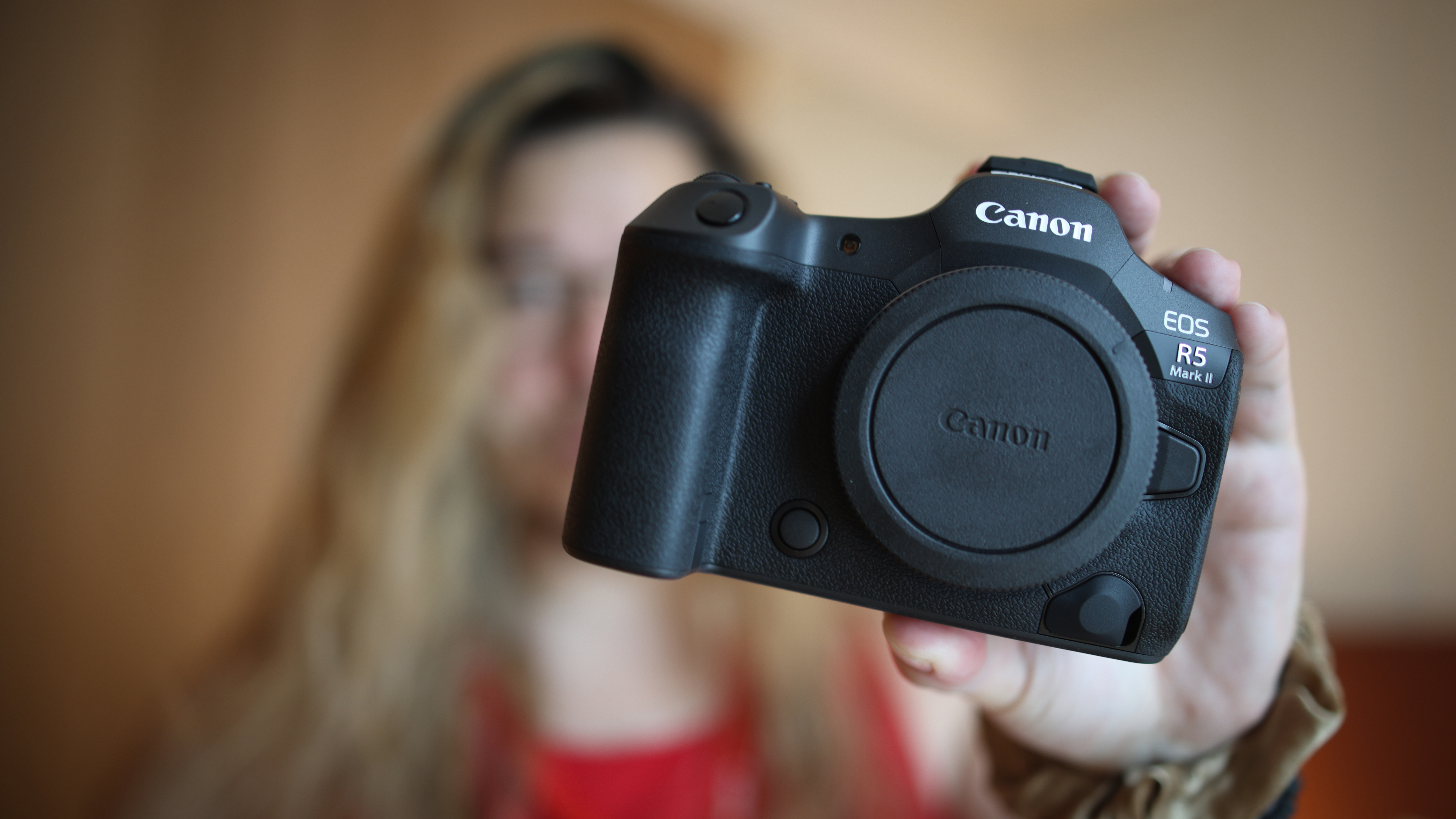
Canon confirms price increase is coming in the US during earnings call
During a quarterly earnings call with investors, Canon Inc. said that some prices would increase in the US as a result of tariffs. The company has not yet shared when such an increase would happen, which products would be affected, or how much prices will increase.
In a question and answer document following the earnings call, Canon Inc. said: “We have notified major dealers that we will raise prices and are in the process of estimating the timing and amount of the increase. Since tariffs are borne against the cost of goods, the higher the cost ratio is, the higher the price rate increases. We will conduct a detailed analysis, including the cost of each product and where it is produced, and will determine the rate of price increase for each product.”
While Canon did not state how much the prices would increase, the company indicated that most of its products that are made in China are not shipped to the US, so the impact of the 145 percent tariff would be small. Instead, the company is investigating how the 10 percent tariff on Japan and other countries will affect the cost of its products.
Read the full report on Canon's tariff announcement here.
Tariffs will also increase camera prices in Canada, Leica says
After Canadian retailer The Camera Store shared that Leica was also raising prices in the country, Leica has confirmed that the US tariffs will also affect pricing in Canada. Leica explained that all imports for North America are sent to Leica's US location before shipping to Canada. The company noted that it is investigating potential workarounds, including a potential Canadian subsidiary.
Leica said that prices in Canada will have an increase similar to the changes in the US, which are expected to go into effect on May 01.
Canon says the new RF 75-300mm will come to the US, but doesn't yet have a launch date
When Canon announced the new RF 75-300mm f/4-5.6 lens, the company's US branch didn't announce the lens at all, leading to speculation that tariffs were preventing one of the company's cheapest RF system lenses from coming to the US. A Canon USA representative, however, has confirmed that the lens will be coming to the US.
While the new budget telephoto will be headed to the US, Canon USA did not share a date when the lens would be coming, nor how much the lens would cost. With the lens already having a launch date and price in other regions, it seems likely that tariffs are, at the minimum, causing a delay in getting the new lens to the US.
Nikon USA is "evaluating potential impacts" of the tariffs
Nikon hasn't been immune to the rumors and speculation arising from the potential impact of the tariffs, but the company hasn't yet shared any delays or price increases. A Nikon USA spokesperson has said that the company is continuing to monitor the changing market conditions. "Nikon is closely monitoring the evolving global market conditions and evaluating potential impacts," A Nikon USA spokesperson told Digital Camera World.
Nikon's Z series mirrorless cameras are largely made in Thailand, while the company's lenses come from Japan, Thailand, and China. Japan and Thailand currently have a 10 percent tariff rate as part of the 90-day pause, while China is facing a 145 percent tariff on goods imported to the US, with some exclusions.
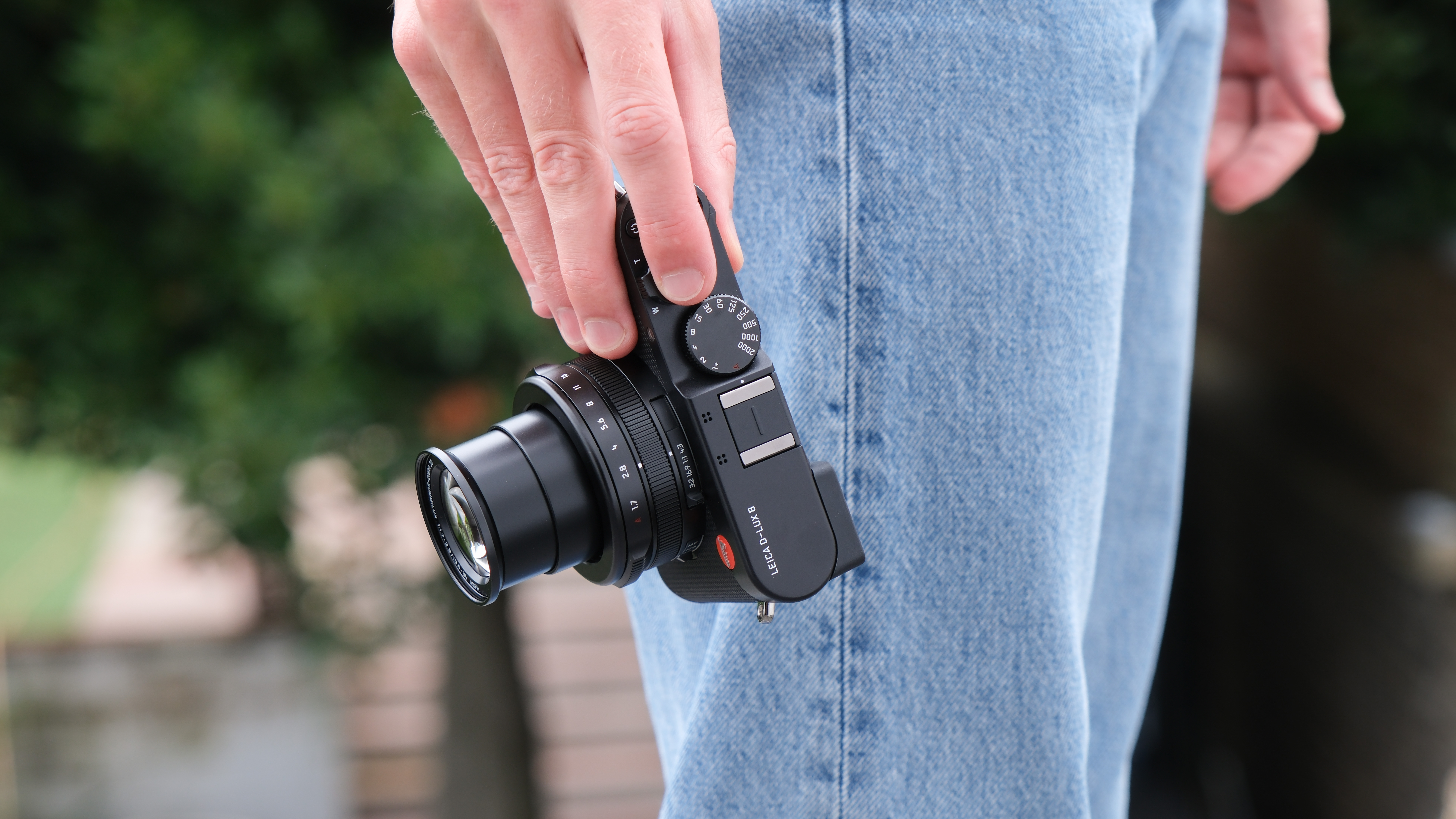
Leica's price increase has now come into effect, with a steep increase on the D-Lux 8
After Leica announced last week that prices would be going up ion May 01, the cost of some Leica gear has now increased in the US. For example, the Leica D-Lux 8, which is made in China, has jumped from $1,595 to $2,790. The full effect of a 145% tariff added to the original cost would be about $3,908, so it does appear that Leica may be absorbing some of the China tariff rates.
Other Leica gear, which is largely made in Germany, sees a smaller increase, including the Leica SL3 and Q3. Leica has indicated that prices have also increased in Canada, as Leica's North America distribution center is located in the US.
Read the full story on how Leica's prices have changed as a result of tariffs here.
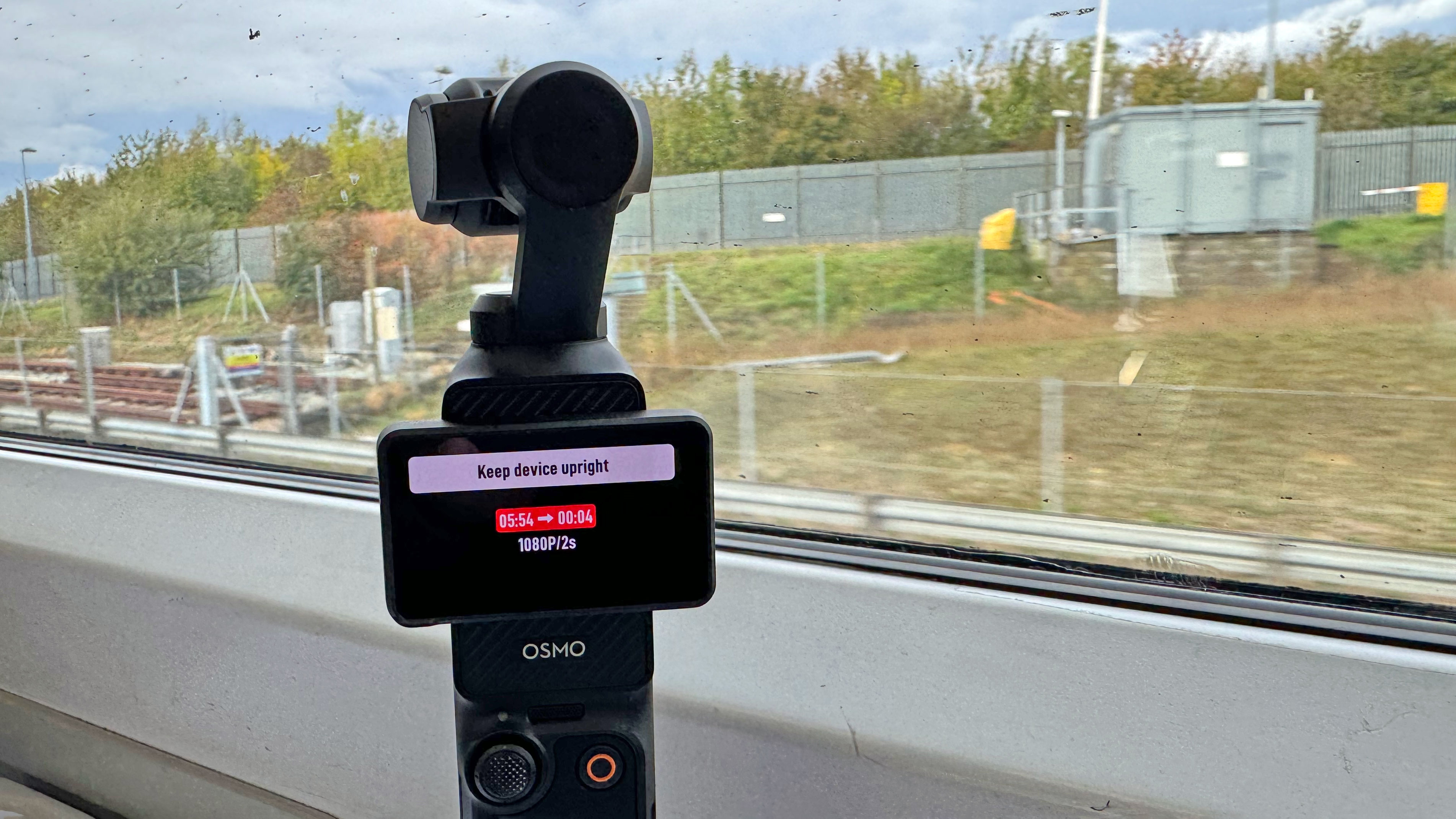
DJI Osmo Pocket 3 increases to $799 in the US
The popular vlogging camera the DJI Osmo Pocket 3 has increased in price to $799 in the US, while the UK price remains the same as at launch. The cost of the popular camera jumped up from $519.
Meanwhile, many DJI drones are listed as out of stock at DJI's US online storefront, suggesting tariffs could be impacting availability. DJI has not announced price changes in the US for drones.
DJI is based in China, which is facing a 145 percent tariff rate.
Tamron to shift lens production to Vietnam
During Tamron's first quarter financial report with investors, the company indicated that it would be shifting more lens production to Vietnam in response to the US tariffs.
Tamron plans to shift production capacity in Vietnam from 25 percent to 45 percent by 2028, while reducing production in China from 65 percent to 45 percent. Tamron expects its Japan production to remain unchanged at 10 percent over the same time period. The company also expects to reduce parts procurement from China from 30 percent to 20 percent or below this year.
A majority of Tamron's photographic products are sold in China at 27 percent, followed by Japan at 20 percent and other Asian countries at 20 percent. Sales to the Americas are about 14 percent.
While the report indicated reduced sales in both the US and China for the first quarter, Tamron said that its 2025 projections remain the same, as much of the changes related to tariffs will be absorbed by cost reductions.
Vietnam is currently facing a 10 percent tariff in the US, while China sits at 145 percent.
The quarterly report also came with the indication that the company plans for six lens launches this year and 10 in 2026.
Trump calls for tariffs on foreign movies, causing confusion
In a post on Truth Social on May 04, President Donald Trump called for a 100 percent tariff on movies "produced in Foreign Lands." But after the post caused stocks from production companies to dip, the White House clarified the following day that "no final decisions" had been made regarding tariffs on films.
"The Movie Industry in America is DYING a very fast death," Trump's post reads. "Other Countries are offering all sorts of incentives to draw our filmmakers and studios away from the United States. Hollywood, and many other areas within the U.S.A., are being devastated. This is a concerted effort by other Nations and, therefore, a National Security threat. It is, in addition to everything else, messaging and propaganda! Therefore, I am authorizing the Department of Commerce, and the United States Trade Representative, to immediately begin the process of instituting a 100% Tariff on any and all Movies coming into our Country that are produced in Foreign Lands. WE WANT MOVIES MADE IN AMERICA, AGAIN!"
Along with causing stocks in companies like Disney, Netflix, Paramount, and Warner Bros. to drop, the social media declaration has caused confusion over how such a tariff would be implemented. Would such a tariff apply to production costs? Could tariffs even be implemented on something that doesn't physically ship, such as streaming services and digital downloads?
White House spokesperson Kush Desai said that the Trump administration was exploring options "to deliver on Trump's directive to safeguard our country's national and economic security while Making Hollywood Great Again."
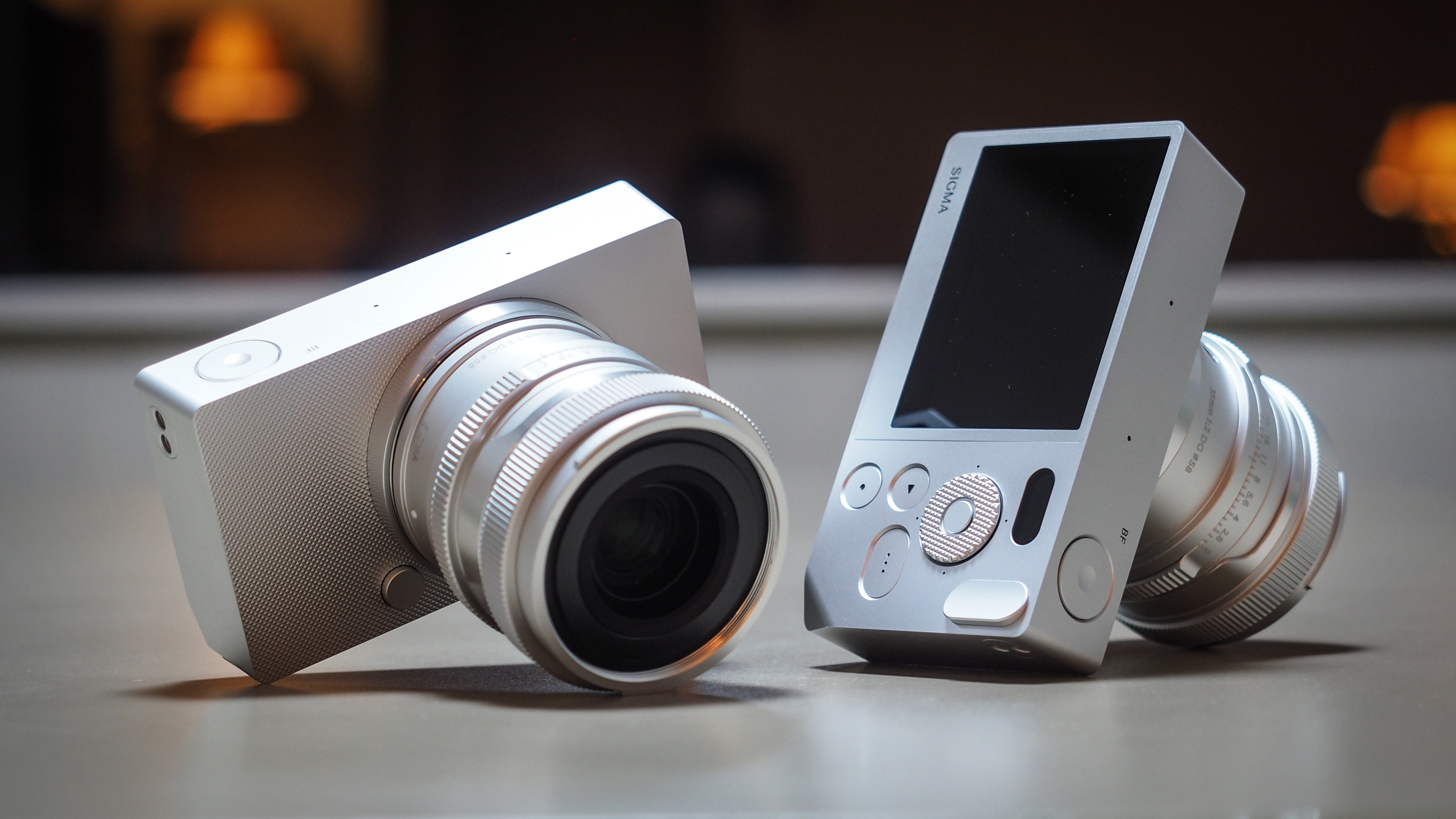
Sigma gear will increase in cost beginning on June 2
In an email to customers, Sigma America has confirmed that a price increase is coming. The company says the increase will arrive on June 2, while current prices will remain in place for in-stock items through June 1.
Sigma says the price increase includes all products purchased on or after June 2, but also includes "unfulfilled items," suggesting backordered products could also be affected. The company did not indicate how much prices would increase, but Sigma's factory is located in Japan, which is currently facing a 10 percent tariff on goods imported to the US.
Read the full story on Sigma's tariff increase here.

The Panasonic Lumix ZS99 has increased by $200 in the US
Panasonic's newest compact camera, the Lumix ZS99, is now $200 more in the US than the list price at launch. Panasonic has not commented on whether or not the change is related to tariffs. The camera's price in the UK and Australia is currently the same as the list price at launch.
The popular camera also appears to have some stock issues in the US, with several retailers listing the camera as out of stock, another factor that could be behind the price change. The Panasonic Lumix ZS99's key features include a 30x zoom lens and a compact design.
Fujifilm estimates tariffs could cost around US$140 million a year
In Fujifilm's latest financial report to investors, the company has indicated that tariffs could cost around $140 million a year if the 10 percent tariff rate continues (around £105 million / AU$218 million).
The report lists supply chain changes, restructuring product and pricing strategies, and reducing costs as ways to mitigate some of those risks. Fujifilm notes that the estimated impact could increase or decrease by up to $100 million in either direction.
While Fujifilm hasn't announced any pricing changes in the US, the report indicates that the company is considering such a change depending on how trade negotiations play out. The effect of tariffs wasn't added to the financial forecast due to uncertainty, Fujifilm noted.
"We will continue to pay close attention to these dynamics and take swift and necessary measures to minimize any impact on our performance,” Fujifilm wrote in the financial report.
Nikon estimates tariffs could cost the company more than US$68 million
During a financial report to investors, Nikon estimated that US tariffs could cost the company ¥10 billion in operating profit, which converts to about $68.7 million / £51.7 million / AU$107.1 million.
The estimate applies across all of Nikon's business segments, not just cameras. Nikon has not factored in those costs into its predictions for the new fiscal year, however, due to a "high level of uncertainty." US sales make up around 26 percent of the company's business.
Trump hints at 80 percent tariff rate as China and the US prepare for negotiations
China and the US are expected to begin trade talks this weekend in Switzerland. A Trump post on social media indicates that the US president believes "80% Tariff on China seems right!"
While the countries are preparing to begin negotiations, analysts don't expect a quick trade deal, according to NPR. But, for the companies that have decided to hold shipments and see how trade deals play out, this weekend's talks could be the first signs of what the tariff rates moving forward could be.
The US is currently charging a 145 percent tariff on many goods from China, with some exceptions in place.
China tariffs temporarily drop to 30 percent
On Monday, May 12, the US and China announced a temporary trade agreement that drops the tariff rates between the two countries for 90 days. The 145 percent reciprocal tariff on goods imported into the US from China has dropped to 30 percent under the temporary agreement. US goods imported to China, meanwhile, have dropped from 125 percent to 10 percent.
The agreement gives the two nations time to negotiate while steeply dropping the tariff rate announced in early April.
The agreement may help some companies restock China-made gear shipped to the US, but experts warned that there could be additional implications. The New York Times noted that the businesses that paused shipments may all rush to get products out at once, for example, increasing demand, which could in turn inflate shipping costs for businesses.
Many cameras and other gear that originate from China have gone out of stock as companies navigate the trade war. Many DJI drones are out of stock at the China-based company's US online store, for example, while Fujifilm has paused pre-orders on some cameras, including the X100VI. The temporary reduction in tariff rates on goods from China may encourage companies to restart shipments.
However, the 30 percent tariff rate could yet lead to additional price increases. The rate still sits higher than the 10 percent rate for most other nations applied during a previously announced pause that lasts through the end of July.
The number of factors playing into a camera's list price means the exact impact of the temporary tariff reduction may be difficult to calculate. But looking at the already announced price changes could offer some insight into how a 30 percent tariff would play out. For example, the made-in-Germany Leica Q3 increased in cost in the US from $5,995 to $6,737 under a 10 percent tariff. The China-made Leica D-LUX 8 rose from $1,595 to $2,792 under the original 145 percent reciprocal tariff.
Tariff reduction on items below $800 could further help China-made cameras, lenses
Following a 90-day reduction of tariffs on goods imported from China from 145 percent to 30 percent, the White House has announced that duties on goods valued under $800 will similarly have reduced tariff rates.
Beginning May 14, tariffs on goods valued under $800 will be charged either a 54 percent tariff or a flat $100 fee per parcel, according to The Verge. That is a reduction from an earlier 120 percent rate on "de minimis" tariff exceptions that apply to goods that are valued under $800. The new rate, however, is higher than Trump's initial $25 flate rate on "de minimis" shipments as well as higher than the rate for goods above $800.
The change will likely help some lower-priced photography gear, including optics from Chinese lens brands. The new higher retail cost of the DJI Pocket Osmo Pocket 3 sits under that $800 mark as well, although that rate is based on the declared value and not the retail value. DJI's Mini 4 Pro and Osmo Action 5 also have retail prices below that number.
Imports above the de minimis exception are currently facing a 30 percent tariff, a drop from 145 percent as part of a 90-day pause to allow the two nations to negotiate a trade deal.
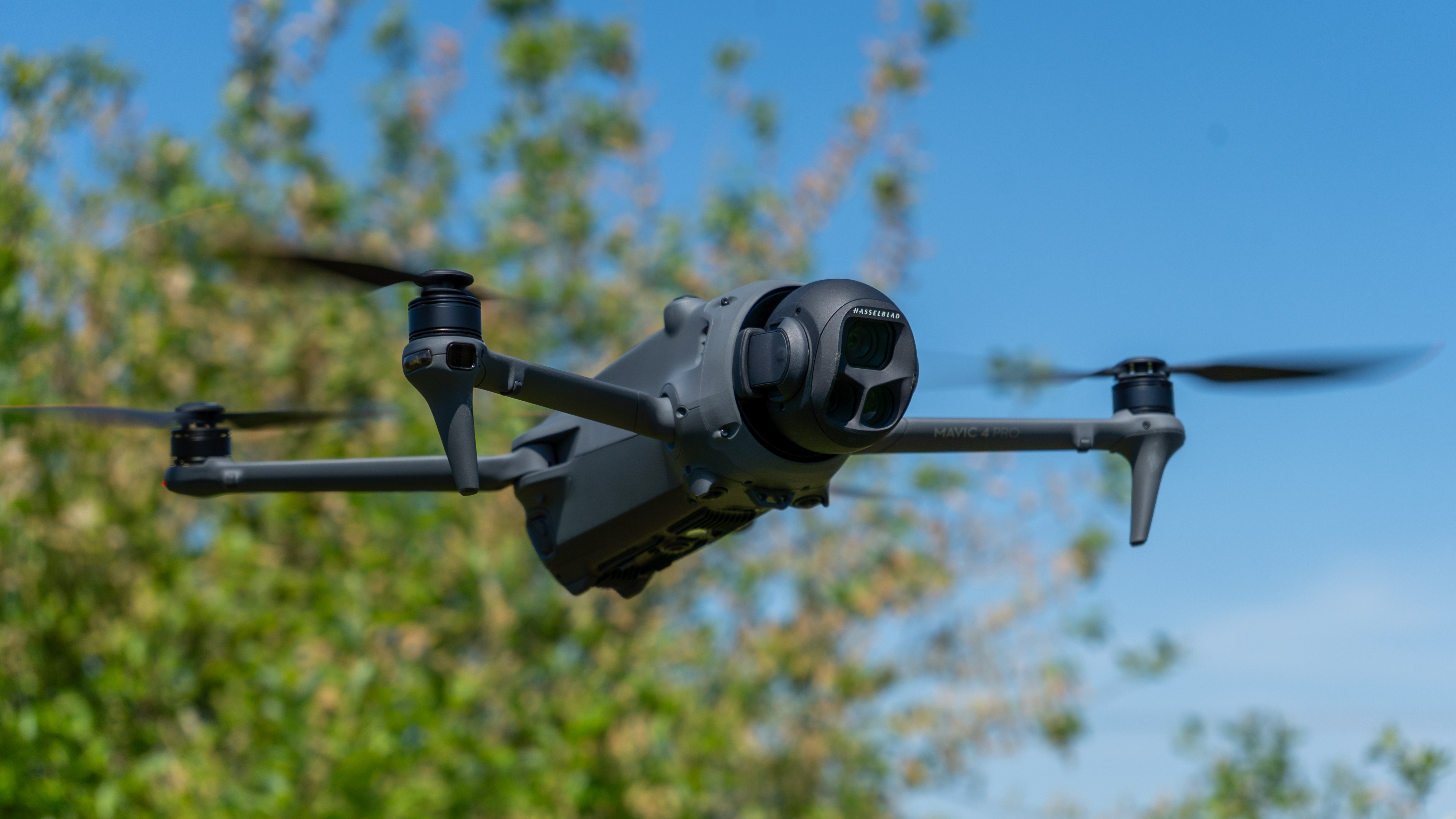
DJI's new drone will be available in the US – but the price appears to be higher
At the DJI Mavic 4 Pro launch, DJI didn't share US availability or prices. However, shortly after the launch, some US retailers listed pre-orders of the new drone.
The quick change on US availability could potentially stem from the temporary rollback on China tariffs from 145 percent to 30 percent. The lowered tariff rate, which is still higher than the current 10 percent reciprocal tariff rate on most countries, is a 90-day reduction that will allow the two nations time to negotiate.
However, when calculating the currency exchange rate, the price in the US – $2,699 – appears to sit a bit higher than the drone's price in the UK. The UK £1,879 list price, when using a currency conversion to USD, would be about $2,503. It's unclear if the roughly $200 USD difference is due to tariffs or another factor, however.
DJI has not yet responded to a request for a comment on the drone's US availability.
Sony discusses raising prices, including the camera segment, due to tariffs
During the financial report for the 2024 fiscal year, Sony indicated that the new tariffs could cost the company around 100 billion yen, which is about $650 million / £513 million.
As part of the question-and-answer session that followed, Sony's Chief Financial Officer addressed a question on tariffs, indicating that Sony "may pass on" the price. The estimate applies to three of Sony's different segments, including the imaging division.
Read the full story on the financial report here.
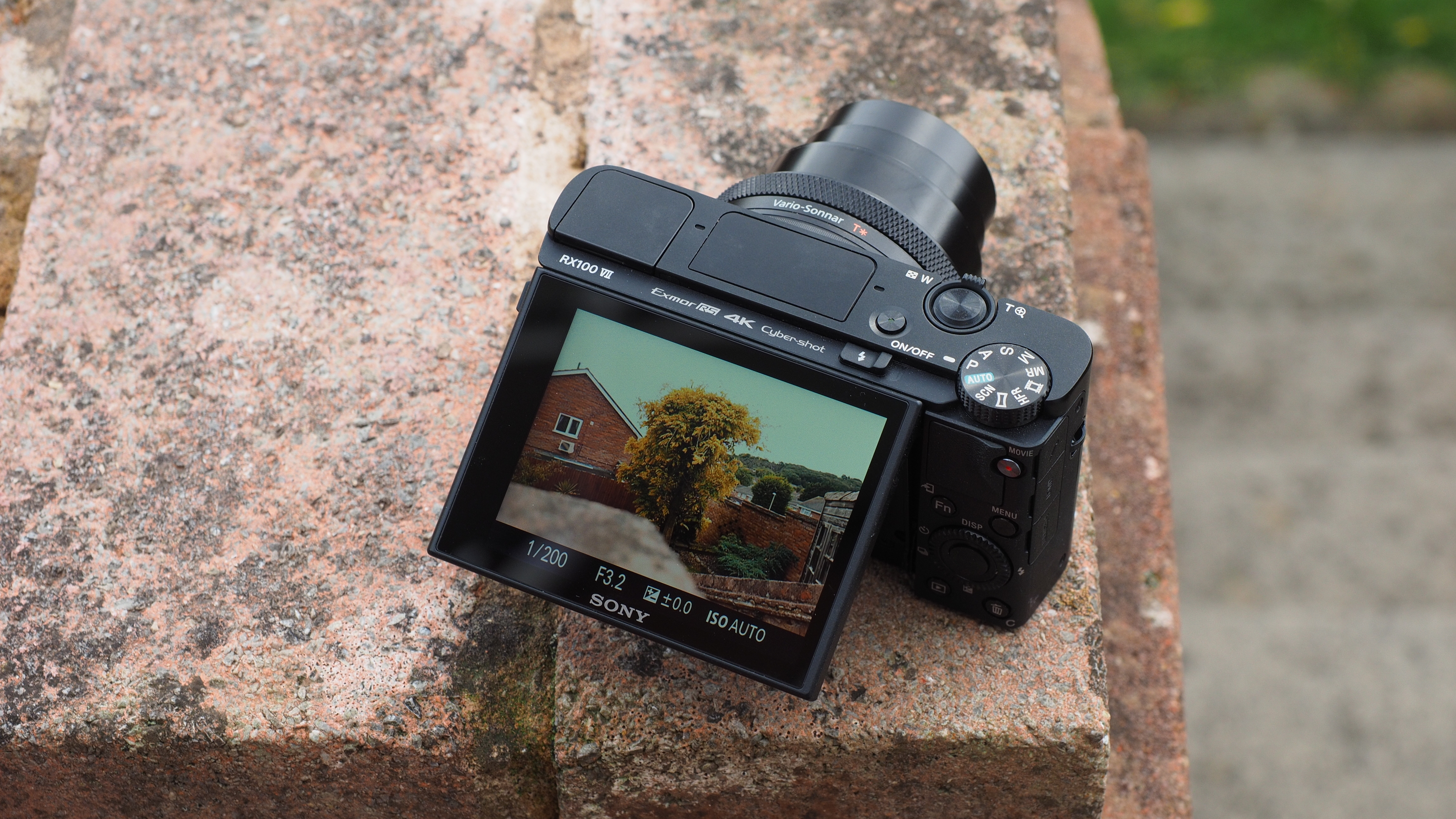
The price of the Sony RX100 VII, RX0 II, and some lenses has increased in the US
On Monday, May 19, the price of the popular compact Sony RX100 VII, as well as several lenses, has increased in the US. The popular compact camera is now $500 more than the list price at launch, selling for $1,699 in the US. The price in the UK remains unchanged.
The cost of the Sony RX0 II has also jumped, along with several lenses such as the Sony E 70-350mm f/4.5-6.3 G OSS and the Sony FE 400-800mm f/6.3-8 G OSS.
The popular camera, as well as the lenses that have increased in price, are reportedly all manufactured in China, which is currently facing a 30 percent reciprocal tariff, a temporary pause from the previous 145 percent rate.
Read the in-depth report on the Sony camera and lens price increases.
Leica eases up on some tariff price increases, including the D-LUX 8
As US-China trade negotiations continue, Leica has lessened the impact of the tariff price increase on some gear manufactured in China. After raising the cost of several products for the US and Canada beginning on May 01, Leica has dropped some of its steepest price increases.
The Leica D-LUX 8 went from $1,595 to $2,790 earlier this month. Now, the Leica US online store lists the compact camera for $1,915. Some retail stores have yet to change the price, however. The change is likely due to the drop in US-China tariffs from 145 percent to 30 percent, a temporary drop to allow the two nations time to negotiate a trade deal. The Leica Lux smartphone camera grip that jumped from $329 to $625 is now $395 in the US.
While Leica appears to have dropped the steepest increases that began earlier this month, the prices on Leica gear made in Germany appear to remain the same. The Leica Q3, for example, is $6,735, up from $5,995. The Leica SL3 is still at $7,485, up from $6,995.
Nikon announces a price change is coming on June 23
Nikon USA has said that a price increase on products is coming on June 23, without specifying which products would be affected nor how much the prices would change.
"At Nikon, we remain committed to providing the highest quality imaging products and value to our customers," the statement reads. "Due to the recent tariffs, a necessary price adjustment for products will take effect on June 23, 2025. We will be carefully monitoring any tariff developments and may adjust pricing as necessary to reflect the evolving market conditions. We wish to thank our customers for their understanding and know that we are taking every possible step to minimize the impact on our community."
Nikon didn't indicate which products would be affected. However, Nikon fans can look at where Nikon kit is made to speculate which products will be hit with the highest tariff rates.
Court says some reciprocal tariffs are illegal, gives Trump 10 days to end Emergency Economic Powers Act tariffs
A US Court of International Trade has ruled that President Donald Trump did not have the authority to impose many of the reciprocal tariffs, giving the administration 10 days to end the affected tariffs.
The ruling doesn't apply to every new US tariff imposed by the Trump administration, but it concluded that the Emergency Economic Powers Act does not give the president the power to levy tariffs without Congress. Those tariffs include the so-called reciprocal tariffs imposed on China and other nations; the ruling does not, however, affect the tariffs on steel and cars, for example.
While the ruling could be a sigh of relief for some Americans, the Trump administration has already appealed the ruling, signaling the tariffs could be in for a long legal battle. Meanwhile, some analysts predict that the president could use other methods to increase import taxes.
The ruling also doesn't affect the proposed tariffs on semiconductors that the administration is researching but has not imposed. The semiconductor tariff is under the Trade and Expansion Act and not the Emergency Economic Powers Act that the court has ruled on.
An appeals court keeps reciprocal tariffs in place, for now
Less than one day after a US Court of International Trade ruled that the reciprocal tariffs enacted under the International Emergency Economic Powers Act were beyond the president's authority, an appeals court has moved to keep tariffs in place. The appeals court has placed an emergency stay on the ten days that the first court gave the Trump administration to end the IEEPA tariffs, effectively keeping the tariffs active as the two sides prepare for a legal battle.
While the case will now move through the appeals process, Trump's senior counsel on trade and manufacturing, Peter Navarro, has said that "even if we lose, we will do it another way." Analysts have similarly predicted that the legal battle could slow down tariffs, but that the Trump administration will likely find other methods to levy the tariffs.
The move adds more uncertainty over the future of camera prices in the US.
Many Sigma camera and lens prices have jumped by 10 percent
After Sigma warned that prices would increase on June 2 in the US due to the tariffs, those price increases have come into effect. The cost of Sigma gear has increased by about 10 percent, which is the current reciprocal tariff rate for Japan, where Sigma gear is manufactured.
The 10 percent increase applies to the Sigma BF as well as many of the brand's most popular lenses. Some price adjustments are less than ten percent, including the Sigma 14-24mm f/2.8 Art.
While the tariff rate for Japan is currently paused at 10 percent, if the two nations do not reach a new agreement, the rate is scheduled to revert to 24 percent on July 8.
Fujifilm resumes shipping the X100VI, GFX100RF and X-M5 to the US
After pausing shipments to the US for three popular cameras, Fujifilm has resumed shipping the X100VI, GFX100RF, and X-M5 to the US. According to retailer Moment, Fujifilm resumed shipping those models on June 2.
Fujifilm paused the shipments for those three cameras as a result of the tariffs. At the time, the tariff rate on imports from China was 145 percent. That has since been paused temporarily at 30 percent. Japan is facing a 10 percent tariff rate, which could jump to 24 percent on July 8 if an agreement isn't reached before the 90-day lowered rate ends.
While Fujifilm is headquartered in Japan, Fujifilm responded to the increased demand for the X100VI by expanding production in China, according to one interview.
Resuming shipping should mean that the cameras start popping up in stock – except the demand and the delay will likely mean the three cameras will remain hard to find for some time. The three models are currently out of stock at Adorama and B&H, with Adorama estimating an August 2025 ship date. Amazon has some X100VI's in stock, but at a rate higher than the $1,599 list price.
Fujifilm's US website now lists a X100VI-JP, X-T50-JP, X-T5-JP and X-M5-JP, hinting at moving production out of China
Fujifilm's US storefront now shows new listings for the X100VI-JP, X-T50-JP, X-T5-JP, and X-M5-JP, while US retailer B&H similarly has new listings for the four cameras with Japan in the name.
Fujifilm US hasn't yet responded to a request for an official comment. But, the new product listings hint that production of those four cameras could be moving to Japan, which currently has a lower tariff rate than China. The new JP models carry the same price as the originals.
US, China have reached a tentative trade deal at 55 percent
The US and China have reached a tentative trade deal, according to President Donald Trump. While the deal still needs to be signed by both parties, Trump says the nations have agreed on a 55 percent tariff on imports into the US and 10 percent on imports into China. The agreement also includes resuming the US access to rare earth metals and magnets.
The 55 percent tariff in the proposed agreement seems higher than the 30 percent reciprocal tariff pause, but the White House has explained that the number comes from the baseline 10 percent reciprocal tariff on all other countries, plus the 20 percent fentanyl tariff and a previously existing 25 percent tariff.
If signed, the agreement could help resume some camera shipments to the US, particularly for compact cameras originating from China. The 20 percent fentanyl and 10 percent reciprocal tariff that didn't exist previously could still mean potential price increases on products that have not already changed in price.
Nikon tariff increase hits dozens of lenses
After Nikon indicated that some prices would increase on June 23, creators are now seeing the effects of that change. The price of a number of different Nikon lenses has increased in the US, with the lenses made in China the most affected. The price change includes some of Nikon's latest lenses as well as older lenses and ranges from minor changes to price increases in the hundreds.
For full details, read the full report on how Nikon prices have been impacted by tariffs.
Canon hikes the prices of cameras by as much as $500
The list price of several Canon cameras and lenses has jumped. Cameras like the flagship EOS R1 are now $500 more in the US than the previous list price, while budget models like the R100 have increased by $50. Several models are now seven to ten percent higher than the previous list price. The lack of short-term sales also seems to exaggerate the increased list prices.
Some Canon lenses have increased in cost as well.
For the full price breakdown, read the full report on Canon's tariff price changes.
Sony has now hiked the price of nearly every mirrorless camera and dozens of lenses
On July 1, Sony appears to have increased the cost of nearly every mirrorless camera body, as well as increasing the list price of dozens of lenses. Camera bodies from the Sony ZV-E10 to the Sony A1 II now have higher list prices on Sony's US website than the cameras did just a few days ago.
Sony hasn't commented on the price changes; however, the company previously indicated during an earnings call that the company was considering increasing prices to help offset the added costs due to expanded import taxes in the US. Sony had previously increased the cost of the compact camera RX100 VII by $500.
Read the full report on how Sony has increased prices in the US following tariffs.
Are more tariffs coming in August? Trump threatens several nations essential to camera manufacturing with higher tariffs
Trump has now both extended the 10 percent tariff pause until August and told more than 20 nations that tariffs would increase if an agreement is not reached by August 01.
Last week, Trump began sharing leaders to the leaders of several nations on Truth Social, indicating new tariff rates on August 01 if an agreement isn't reached before then. The letters note that any retaliatory tariffs will be met in kind and added on top of the tariff rates.
That list of warning letters now includes Japan (25 percent) as well as the EU (30 percent), Thailand 36 percent), and Malaysia (25 percent). Many key camera brands are headquartered in Japan, and some also manufacture cameras there. Canon, Nikon, and Sony manufacture some gear in Thailand, while Malaysia has some manufacturing for Canon and Panasonic. Leica and Hasselblad, meanwhile, could be impacted by any EU tariffs.
While the letters announce potentially higher tariffs set to begin in less than a month, those potential rates could be negotiated before August 01, when a 10 percent pause on reciprocal tariffs now expires.
US, Japan, reach 15 percent tariff deal
According to US President Donald Trump, Japan has agreed to a new trade deal that puts tariffs at 15 percent. The number sits higher than the 10 percent pause, but lower than the threatened 25 percent tariffs that were expected to hit on August 01.
The agreement is essentially a 5 percent increase on top of the 10 percent tariff pause that has already caused a handful of camera companies to raise prices in the US. Canon, Nikon, Fujifilm, and Sigma manufacture a significant portion of their photography gear in Japan.
Read the full report on the 15 percent tariff agreement and which brands are most likely to be affected.
US retailer says there's no official word from Fujifilm yet on a rumored price increase.
Shortly after the US and Japan reached a new 15 percent tariff agreement, rumors began swirling about a price increase coming from Japan. While Fujifilm US declined to comment on rumors, a retailer told DCW that they did not have any official word on price changes from Fujifilm yet, but paused orders for several cameras due to an influx of new orders from the rumors.
Read the full report from the retailer and what's rumored for Fujifilm here.
Canon plans to increase costs (again) as tariff costs increase
During the quarterly investor's meeting, Canon said that increasing prices would help offset some of the increased US tariff costs. The new trade agreement between the US and Japan wasn't announced in time to be reflected in the company's financial forecast. But during the meeting, Canon said that the estimated 41.3 billion yen tariff costs would be offset by adjusting prices.
"Based on this assumption, we expect tariffs to increase costs by 41.3 billion yen, which we will address through selling price increases totaling 35.2 billion yen. And due to price increases, we expect a decrease in sales volume in the amount of 18.7 billion yen. We have included this in our projection by business unit,” the report reads.
Canon did not indicate which products would be affected, nor by how much prices would be adjusted. Canon has already increased the price of some cameras and lenses from the 10 percent tariff, a number that is now adjusting to 15 percent.
Read the full report on Canon's tariff increase – and plans for expanded compact camera production – here.
Sigma says that prices won't be increasing again, absorbing a 5 percent tariff increase
Optics and camera maker Sigma says that US prices won't increase in the wake of the announcement of an increase in tariffs on Japanese goods from 10 percent to 15 percent.
Sigma had previously adjusted list prices in the US under the 10 percent tariffs. However, the brand says that it will be absorbing the recent 5 percent increase on products shipped from Japan.
"While this presents additional cost pressures across the industry, we want to assure you that Sigma will not be implementing any further price increases at this time," wrote Mark Amir-Hamzeh, the president of Sigma America.
"In June, we adjusted our pricing to account for the initial 10% tariff," he said. "After careful evaluation, we have decided to absorb the additional 5% increase internally, rather than pass it along to our customers and retail partners."
The announcement of a new trade agreement between Japan and the US brought more uncertainty in the industry over whether prices would change again. At least in Sigma's case, that answer is no, at least not at this time. Sigma's entire product line is manufactured at one factory in Japan.
Fujifilm increases camera, lens prices in the US by 10-15 percent
Effective August 01, Fujifilm has increased the price on cameras and lenses sold in the US. Most price changes fall between the 10 and 15 percent range.
The price change appears to also include not-yet-shipped pre-orders on affected cameras; however, some retailers may choose not to pass that along to the customer on pre-ordered items. (Moment, for example, has increased prices for new orders but says it will not pass those costs on to customers who have already placed orders.)
Fujifilm's most recent camera launches, the X Half and the X-E5, have not changed in price.
Read the full list of Fujifilm's price changes on cameras here.
Fujifilm confirms another price increase is in the works for the US on August 30
In a statement to the press, Fujifilm has confirmed that another price increase is coming on August 30 for the US.
The company did not reveal which products would be affected, nor by how much. But the move comes 30 days after Fujifilm's first tariff price increase in the US, which increased prices on cameras and lenses between 10 and 15 percent.
Prior to the first price increase, Fujifilm shifted the production of some popular cameras from China to Japan for models headed to the US, including the X100VI and X-M5.
Nikon confirms that a second price hike is coming to the US
Rumors have been circulating that Nikon is planning a second price increase in the US – and now a Nikon USA representative has confirmed that additional pricing changes are coming on September 01.
A Nikon representative told Digital Camera World that a price change is coming on September 01 in the US. Nikon did not indicate how much prices would change, nor on which products.
Read the full report on Nikon's September tariff price increase here.







